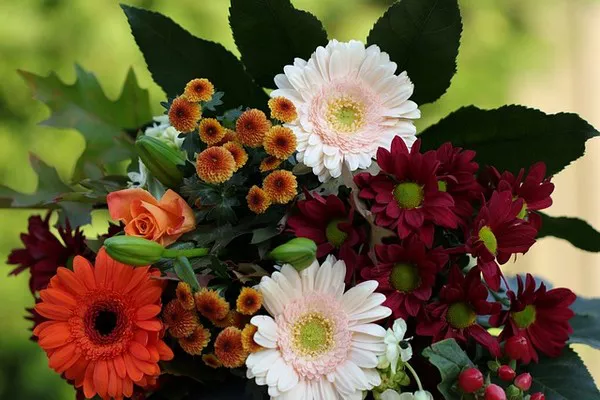Flowers have long been admired for their beauty and fragrance, gracing gardens, bouquets, and floral arrangements. However, beyond their aesthetic appeal, many flowers also offer a delightful and surprising addition to our culinary experiences. Edible flowers have been used for centuries in various cuisines around the world, adding both flavor and visual appeal to dishes. In this article, we will explore the fascinating world of edible flowers, discussing their culinary uses, flavors, and safety considerations.
A Blossoming Trend
The use of edible flowers in cuisine has seen a resurgence in recent years as chefs and home cooks alike seek to infuse their dishes with unique flavors and stunning presentation. Edible flowers can be incorporated into a wide range of dishes, from salads and appetizers to main courses and desserts, allowing for creative experimentation in the kitchen.
Before you start plucking petals from your garden, it’s essential to familiarize yourself with the types of flowers that are safe to eat and those that should be avoided. Safety should always be a top priority when it comes to consuming flowers, as some varieties can be toxic. To help you navigate this blossoming trend, we have compiled a list of flowers that are not only safe but also add a burst of flavor and color to your culinary creations.
Nasturtiums (Tropaeolum majus)
Nasturtiums are a popular choice among edible flowers enthusiasts due to their vibrant colors and peppery flavor. Both the flowers and leaves are edible, making them a versatile addition to salads, sandwiches, and garnishes for savory dishes. Their vibrant red, orange, and yellow blossoms can elevate the visual appeal of any meal.
Violas (Viola spp.)
Violas, often referred to as Johnny Jump-ups or pansies, are a delicate and delightful edible flower. They come in various colors, including purple, yellow, and white, and possess a subtle, slightly sweet flavor. Violas are perfect for decorating cakes, pastries, and salads, or simply for adding a touch of elegance to your plate.
Calendula (Calendula officinalis)
Calendula, also known as marigold, is renowned for its vibrant orange and yellow petals. These flowers have a mild, slightly tangy flavor and are often used to infuse color into dishes like rice, soups, and stews. Calendula petals can also be used to make herbal teas or add a pleasant twist to butter and cream cheese.
Borage (Borago officinalis)
Borage flowers are striking blue and have a mild, cucumber-like taste. They are commonly used as a garnish in cold soups, cocktails, and summer salads. The flowers can also be candied and used as decoration for cakes and pastries.
Lavender (Lavandula spp.)
Lavender is not only prized for its fragrant aroma but also for its culinary uses. Its sweet, floral flavor can be infused into desserts like ice cream, shortbread cookies, and custards. Be cautious with the amount you use, as lavender can quickly overpower a dish if not used sparingly.
Chrysanthemums (Chrysanthemum spp.)
Chrysanthemums offer a subtle, slightly peppery flavor that pairs well with salads and stir-fried dishes. The petals can be used in a variety of ways, from steeping them in hot water to make a delicate tea to garnishing dishes for a touch of elegance.
Roses (Rosa spp.)
Roses are one of the most iconic edible flowers, valued for their sweet, floral flavor. The petals can be used to make rosewater, which is a popular ingredient in Middle Eastern and Indian cuisines. They can also be crystallized or used to infuse jams, jellies, and desserts with a delightful fragrance.
Safety Considerations
While incorporating edible flowers into your culinary creations can be a delightful experience, it is crucial to exercise caution and follow some essential guidelines to ensure safety:
Choose organic, pesticide-free flowers: Only use flowers that have been grown without the use of pesticides, herbicides, or chemical fertilizers. If you’re unsure about the growing conditions, it’s safer to avoid consumption.
Be certain of the flower’s identity: Accurate identification is crucial when foraging for edible flowers. Consult a reliable field guide or an experienced forager to ensure you are harvesting the correct species.
Avoid toxic flowers: Some flowers are toxic and should never be consumed. Common examples include foxglove, oleander, and lily of the valley. Always research a flower’s edibility before using it in your dishes.
Moderation is key: While edible flowers can enhance the visual and taste appeal of your dishes, they should be used in moderation. Overuse can overwhelm the palate and detract from the overall dining experience.
Allergies: Some individuals may have allergies to certain flowers, so be mindful of your guests’ dietary restrictions and allergies when serving dishes with edible flowers.
Remove pistils and stamens: In some flowers, such as lilies and daylilies, it is advisable to remove the pistils and stamens before consumption, as they can be bitter or cause allergic reactions.
Conclusion
Edible flowers provide a unique opportunity to elevate your culinary creations by adding vibrant colors, intriguing flavors, and a touch of elegance. However, it is essential to exercise caution and prioritize safety when incorporating flowers into your dishes. By selecting the right flowers and following safety guidelines, you can embark on a delightful culinary adventure that will not only please your palate but also impress your guests with the beauty and flavor of edible flowers. So, the next time you’re in the kitchen, consider experimenting with these edible blooms to take your cooking to a whole new level of creativity and sophistication.


